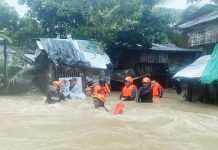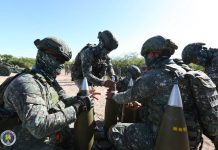
DISASTER preparedness goes far beyond the motions of sounding alarms and leading people out of buildings. It is built on the unseen framework of command, coordination, and communication — elements that transform a mere drill into an effective life-saving operation. Without these, even the best-laid plans risk collapsing into confusion when real emergencies strike.
The recent citywide earthquake drill at the Iloilo City Hall, which earned an 85 out of 100 score, revealed both progress and pitfalls. While the quick six-minute evacuation reflected growing awareness and discipline among city employees, the City Disaster Risk Reduction and Management Office (CDRRMO) was right to point out what remains the weakest link: the command system.
CDRRMO Disaster Response Division chief Darwin Papa candidly noted that while the drill was generally successful, there were lapses in coordination and employee engagement. He emphasized the need to strengthen the Incident Management Group (IMG) — the team responsible for directing, communicating, and managing response operations during crises. Without a clear and empowered command structure, even the most rehearsed evacuation can descend into chaos.
This is a critical reminder that in disaster management, hierarchy and communication save lives. The effectiveness of any emergency response depends not only on how fast people move but on how well they are directed. Every second counts, and every instruction must come from a command center that knows who does what, when, and where.
It is not enough to have drills. Iloilo City must ensure that these exercises sharpen the operational chain of command. Marshals and floor wardens must be properly trained, and contingency protocols should be understood at every level — from department heads to frontliners. The IMG, in particular, must be expanded and empowered to make real-time decisions during drills and actual disasters.
A strong command system also prevents confusion among evacuees, ensures accountability, and keeps communication flowing smoothly. It is the backbone of resilience — the structure that keeps the entire system from collapsing under panic or uncertainty.
Iloilo City has made commendable strides in cultivating a culture of preparedness. But as recent observations show, coordination is the next frontier. The CDRRMO’s call to reinforce the city’s command system must be acted upon swiftly and seriously.
Because when disaster strikes, it will not be the loudest alarm or the fastest runner that determines survival — it will be the strength of leadership and the precision of coordination that make the difference.







